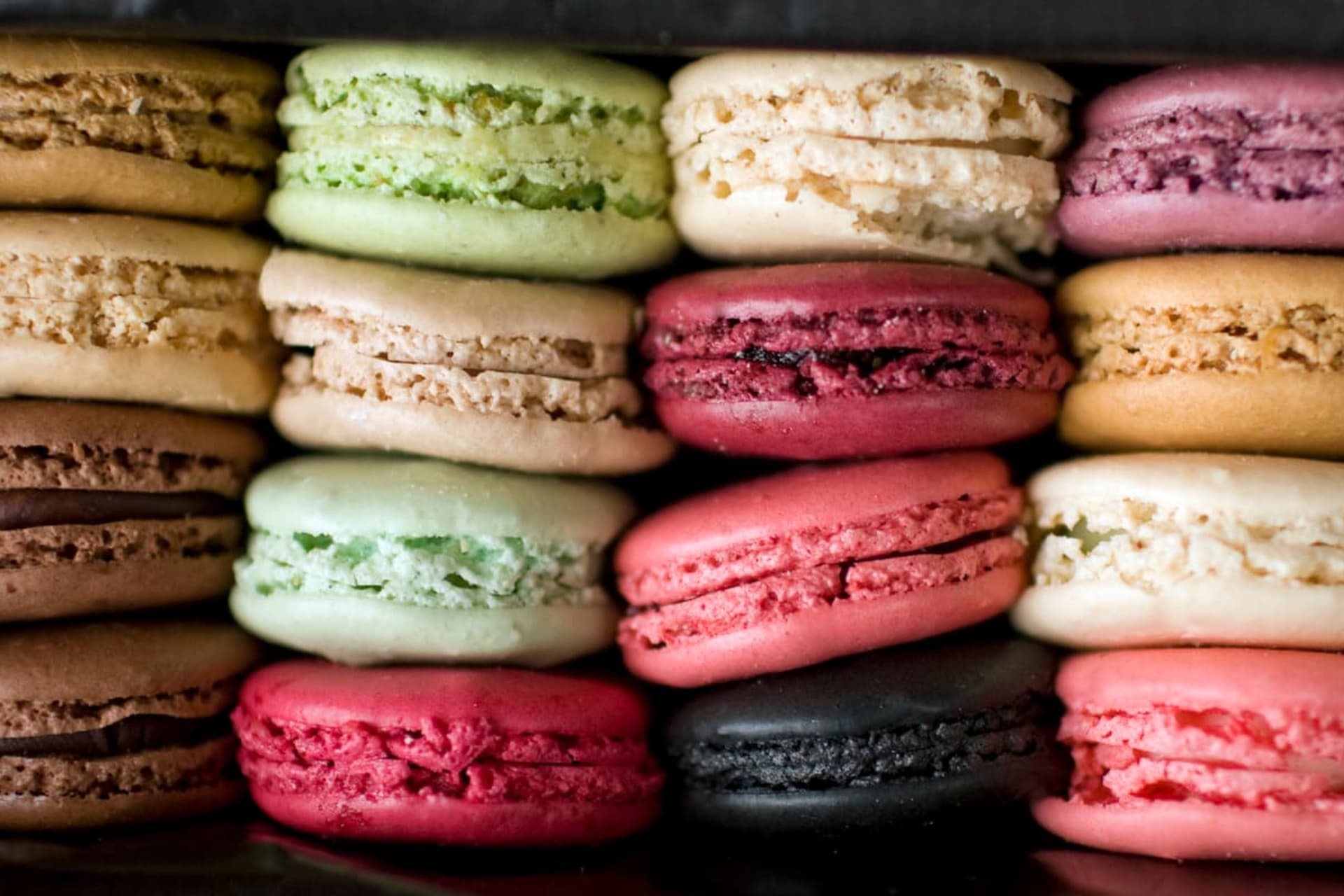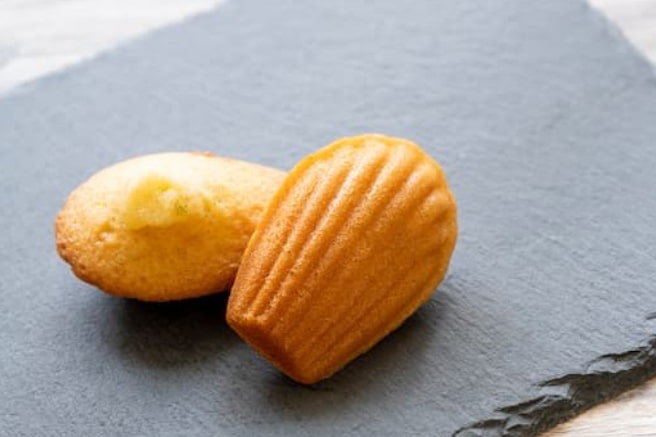Top treats: the best French desserts

Few nations rival the sophistication and creativity of France when it comes to culinary excellence, especially the best French desserts.
French patisserie, among other desserts, is celebrated worldwide for its delicate textures, intricate designs and exquisite flavors.
From the iconic crème brûlée with its perfectly torched sugar crust to the buttery, flaky layers of pastry found in mille feuille, French desserts provide an unmatched experience of indulgence and artistry.
In this article, we'll explore the best French desserts, discovering what makes these treats so irresistible.
Whether you’re a seasoned pastry enthusiast or new to French cuisine, we’ll give you the tips on how to make these incredible dishes yourself.
Famous French desserts
Renowned for their elegance, complexity and exquisite flavors, these delicious delights from France are worth seeking out.
Here are some well-known French sweets and desserts that anyone with culinary interests should know.
Crème brûlée: the quintessential French dessert
Meaning ‘burnt cream’, this classic treat features a rich custard base topped with a crisp layer of caramelized sugar.
The silky smooth custard, typically infused with vanilla, provides a great foundation, while the thin, crackly top adds a delightful crunch.
Crème brûlée's simplicity is deceptive, as achieving the perfect texture requires precision and patience.
This dessert is often served in individual ramekins and is a favorite at French restaurants worldwide.
Macarons: a colorful delight
Perhaps the most visually appealing of all French desserts, these exquisite creations are a rainbow of colors and a variety of flavors.
Macarons are delicate meringue-based confections made with almond flour, egg whites and sugar, resulting in a crisp exterior that gives way to a chewy center.
This is then filled with a range of options, from rich ganache to fruity jams or delicious buttercream.
Macarons are a testament to the finesse of French patisserie, requiring skill to perfect their smooth, glossy shells and the right level of sweetness.
Tarte Tatin: a classic
A classic French upside-down tart that highlights the simple yet delicious combination of caramelized apples and buttery pastry.
This dessert was famously created by accident at the Hotel Tatin in the 1880s when one of the Tatin sisters unintentionally baked apples and pastry upside down.
Served warm, often with a scoop of crème fraîche or vanilla ice cream, Tarte Tatin is comfort food at its finest.
Chocolate soufflé: decadence in a ramekin
The ultimate French culinary experience. This airy, chocolatey delight is renowned for its dramatic rise and soft, melt-in-the-mouth texture.
Made with a base of rich chocolate custard and whipped egg whites, a well-made soufflé is light yet intensely flavorful.
Baking it requires precision because opening the oven at the wrong time can cause the soufflé to collapse.
Often served with a dusting of powdered sugar or a side of crème anglaise, the chocolate soufflé is a true showstopper.
Gâteau opera: a layered masterpiece
A sophisticated and elegant dessert that epitomizes the art of French patisserie.
This layered cake consists of thin sheets of almond sponge cake soaked in coffee syrup, interspersed with coffee buttercream and rich chocolate ganache.
Topped with a glossy melted chocolate glaze, the gâteau opera is as much a feast for the eyes as it is for the palate.
Each bite offers a harmonious blend of textures and flavors, making it a favorite among coffee and chocolate lovers.
Filled éclairs
These are elongated pastries made from choux dough, baked until crisp and hollow, then filled with a variety of rich, creamy fillings.
Traditional éclairs are often full of vanilla pastry cream and topped with a shiny layer of chocolate ganache. However, modern variations include fillings such as coffee, pistachio or fruit-flavored creams.
The contrast between the light, airy pastry and the smooth, luscious interior makes éclairs a favorite as a light dessert or an afternoon snack.
Their elegant shape and indulgent flavors ensure they are a staple in any French bakery.

Madeleines: small but mighty
Shell-shaped sponge cakes that are synonymous with French tea time.
Despite their modest size, madeleines pack a punch with their buttery, lemony flavor and light, airy texture.
Traditionally baked in special molds that give them their distinctive shape, these delightful cakes are often dusted with powdered sugar and enjoyed with a cup of tea or coffee.
Their simplicity and elegance make them a timeless classic.
Crêpes: thin, delicate pancakes
A versatile French staple that can be enjoyed sweet or savory.
These thin, delicate pancakes are made from a simple batter of flour, eggs, milk and a pinch of salt. Sweet crêpes are often filled with ingredients such as chocolate sauce, fresh fruits or sugar and lemon juice.
Savory versions, known as galettes, can be filled with ham, cheese and eggs.
Whether served as a breakfast treat, a dessert or a main course, crêpes are a beloved staple of French cuisine.
The best way to develop your French desserts knowledge and skills is by studying for a degree in French pastry arts.
Other delicious French desserts
While iconic options such as crème brûlée and macarons often steal the spotlight, there are a variety of other lesser-known but equally delectable treats in the canon of French sweets.
Some other delicious French desserts that are sure to delight your taste buds are:
-
Clafoutis: a rustic, custard-like dessert traditionally made with black cherries arranged in a buttered dish and covered with a thick flan-like batter. Baked until golden and slightly puffed, the dessert is dusted with powdered sugar before serving
-
Canneles: originating from the Bordeaux region, they are small, cylindrical pastries with a dark, caramelized crust and a tender, custardy interior. These are known for their unique contrast between the crispy exterior and the soft, aromatic center
-
Paris-Brest: created to commemorate the famous bicycle race, this popular dessert features a ring of choux pastry filled with praline-flavored cream and topped with slivered almonds. The Paris-Brest's wheel-like shape and rich, nutty filling make it a favorite among pastry lovers
-
Île flottante: this ‘floating island’ is a visually stunning dessert consisting of poached meringues floating on a sea of vanilla custard sauce. Often garnished with caramel sauce and toasted almonds, this delicious dessert is as light and airy as it is elegant
-
Galette des rois: a round, flaky puff pastry pie filled with frangipane. This festive dessert is celebrated throughout France and is enjoyed by families and friends during the holiday season
-
Tarte au citron: a bright and tangy dessert that features a crisp pastry crust filled with a smooth, zesty lemon curd. Often topped with a swirl of meringue or simply dusted with powdered sugar, this tart is the perfect balance of sweet and tart flavors
-
Mille Feuille: a sophisticated dessert made of layers of thin, flaky puff pastry alternating with layers of pastry cream. The top is usually glazed with icing and decorated with chocolate or fruit
-
Pain d'épices: a fragrant gingerbread-like cake that originated in the Alsace region. Made with a blend of spices such as cinnamon, cloves and nutmeg, this dense, aromatic cake is often enjoyed during the winter months
How to learn to make French desserts
Whether you're an aspiring pastry chef or a home baker looking to improve your skills, there are several ways to learn more about these remarkable sweet treats.
Here are some of the more effective ways to master these culinary delights.
Enroll in a pastry school
One of the most comprehensive ways to learn French pastry is to take a course at a specialized culinary institute.
Renowned schools offer a wide range of programs, from short courses to advanced degrees, and cover everything from basic techniques to advanced pastry arts.
These establishments provide hands-on training from expert chefs, allowing you to learn in a professional environment and gain a deep understanding of French pastry traditions.
Take online courses
If attending a pastry school in France isn't feasible, numerous virtual classes provide excellent alternatives. Platforms such as Masterclass, Udemy and Coursera provide video tutorials and interactive classes taught by experienced pastry chefs. These courses allow you to learn at your own pace from the comfort of your home and often include detailed instructions and tips for perfecting various French desserts.
Attend workshops and classes
Local cooking schools, culinary institutes and even some high-end bakeries offer seminars and training sessions focused on French desserts. These shorter sessions can provide hands-on experience as well as immediate feedback from instructors. Look for workshops that cover specific desserts, such as macarons or éclairs, to build your French dessert chef skills step by step.
Use cookbooks and online videos
There are countless resources dedicated to French pastry, written by some of the most respected names in the industry. While it can be difficult to master recipes from books, they still provide reliable recipes and valuable insights into French baking. On top of this, platforms such as YouTube have plenty of free tutorial videos on making French desserts. Watching videos can be particularly helpful for visual learners who benefit from seeing each step in action.
Practice, practice, practice
The key to mastering French desserts is consistent effort. Start with simpler recipes such as madeleines or crêpes and gradually work your way up to more complex desserts such as gâteau opera or chocolate soufflé. Pay attention to details, follow recipes closely and don’t be afraid to make mistakes. Each error is an opportunity to learn and improve.
Conclusion
The sweet treats of French patisserie are characterized by exquisite flavors, delicate textures and timeless culinary artistry. From the rich, creamy allure of crème brûlée to the colorful charm of macarons and the comforting warmth of Tarte Tatin, French desserts are part of a long-standing, sophisticated tradition. Whether you’re an aspiring pastry chef or simply a dessert enthusiast, these iconic sweets offer endless inspiration and delight.
Each dessert tells a story of meticulous preparation and artistic presentation, inviting novices and experts to explore their full range of possibilities and savor the results of their efforts. If you dream of becoming a professional in the world of pastry and desserts, see how studying at a world-renowned French pastry school could help.


